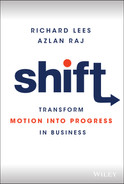INTRODUCTION: ROCKING HORSES DON'T BELONG IN BOARDROOMS
“Don't confuse motion for progress. A rocking horse moves all day but goes nowhere”!
– Alfred Montapert
Picture a child sitting on a rocking horse. She is laughing as she sways back and forth. Maybe she is pushing the rocking horse to go faster, encouraging it by shouting phrases like, “Giddy up!” As you watch the child enjoying her ride on the rocking horse, you smile. She is safe; she is happy, and you know that regardless of what her imagination is telling her, she is going nowhere (in the physical sense). You leave her to her game, confident that you won't look out of the window to see her galloping across the garden on her rocking horse in half an hour.
You would certainly think it odd if you walked into a boardroom to see the CEO, CMO, CTO, or any of the other directors sitting on a rocking horse. However, all too often, businesses have boardrooms filled with metaphorical rocking horses; they just don't realise it. They don't always distinguish between motion and progress, or know how to turn the motion they are generating into progress.
Charting progress in a modern business world
The business world today, especially after black swan events like the 2008 financial crisis or the global COVID-19 pandemic, is characterised by an increasingly big number of known unknowns. It seems clear that the past is probably no longer a safe basis for predicting the future, and much of what we have learned and been taught may well have limited relevance to our future decision making.
The competition feels like it can come from anywhere, and time is definitely no longer on your side. As Rupert Murdoch said (in 1999!), “The world is changing very fast. Big will not beat small anymore. It will be the fast beating the slow”.
To not only survive, but to thrive in the new world is a constant challenge that requires businesses to fast become the masters of many things. Agility (speed) and adaptability (ability to change) have become strategic differentiators, giving those businesses that can rapidly adapt and build a muscle to respond to change a massive advantage.
Some businesses have the advantage of already being in this state (let's call them the leaders). Others are undergoing massive transformations to close the gap and either attain or regain this state (let call them the followers, who are playing catchup). However, to do this requires sustained and directed momentum, or motion, but motion alone will not give you the advantage. The advantage comes from turning motion into progress.
This might sound simple enough, but often this is more difficult to achieve than it first appears. The result in many businesses is a great deal of motion that adds little real value and instead wastes precious time and resources, and may even contribute to a loss of competitive advantage. The opportunity, as we explain in this book, is to turn that motion into progress. To do that, you need to connect the three core themes of the business ecosystem, which we are calling the principal, the crew, and the season.
The race to the top
Our favourite analogy to describe what a business needs to do in order to turn motion into progress is Formula 1. Behind the fast cars, daring driving, and excitement of race days there are three key components at work: the principal, the crew, and the season.
The principal of each team sets the direction and leads from the front. The crew needs to collaborate and work together to constantly improve the car, its engine performance, drive the car, and find ways to shave even 0.1 of a second off the lap time or length of a pit stop because that 0.1 second can mean the team's driver wins the race. Then there is the Formula 1 season, which lasts for much longer than a single race. Every race throughout the season is different. The car itself will perform differently depending on both the track and the weather conditions on the day, and the crew will need to adapt according to the conditions.
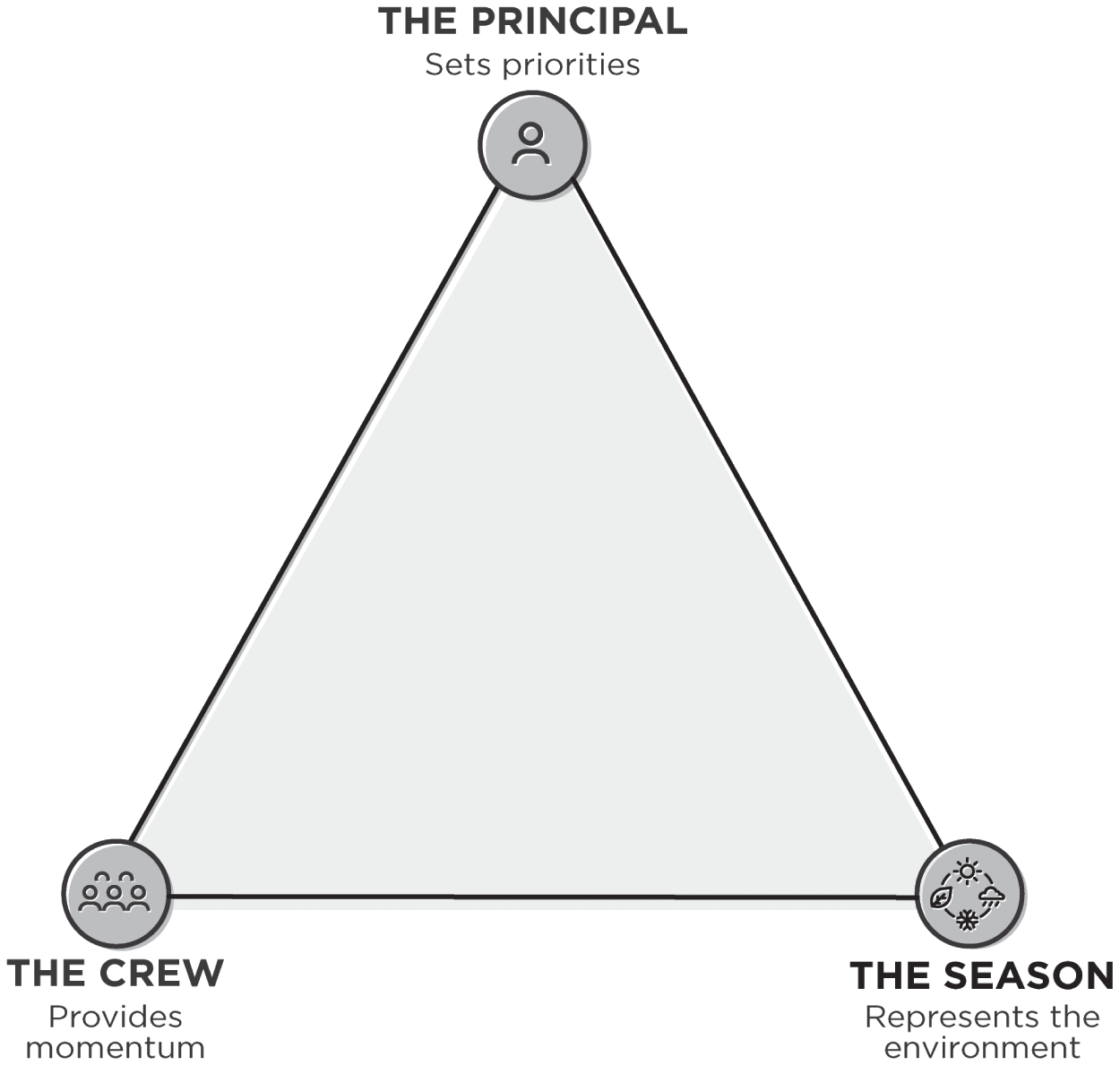
When we apply those three principles to a business, we can see a clear correlation to core enterprise functions and challenges. The principal represents the leaders within the business, the people who make those big decisions, keep one eye on the big picture, and make sure that the company is moving in the right direction. The crew is the broader teams, the people on the ground who make things happen. When they are all aligned behind an organisation's vision, great things happen and progress begins to accelerate.
The season is the external environment that will have an impact on not only how the business performs, but also on how the team functions and performs in different situations. The season is the one element of the pyramid that the business doesn't have total control over. What any organisation can control, however, is how it responds to its environment. This becomes a game of agility, where the businesses that learn fast and adapt quickly survive, and those that don't, die.
You need to have all three components of the pyramid in place and working together in order to achieve progress. Without all of these components, your business will struggle to successfully turn motion into progress.
If you just have the principal with the season, but the crew is not aligned and engaged, you create fatigue. You will only have a short amount of time to build momentum and achieve your goals before you run out of energy.
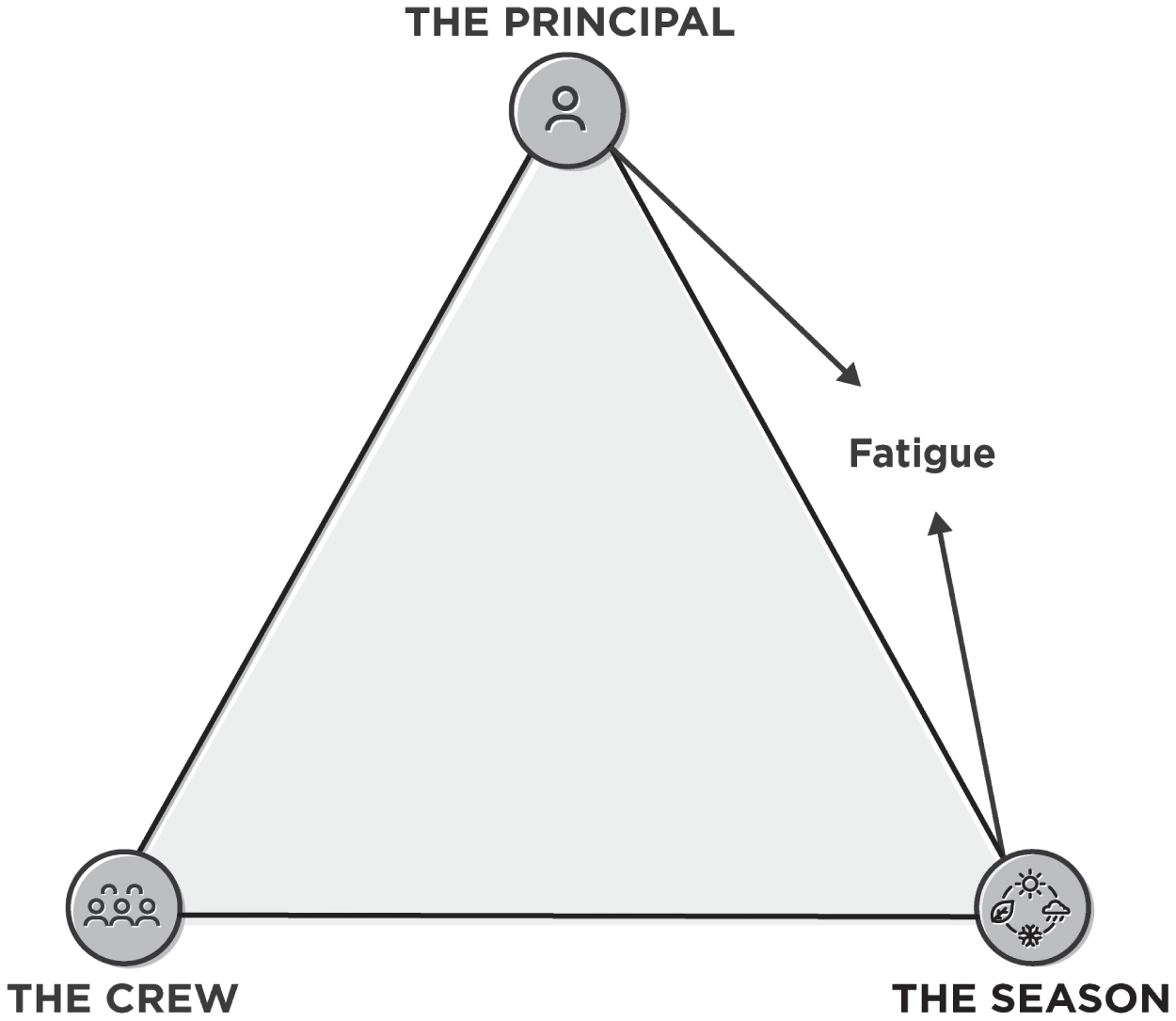
If you have the principal setting a clear direction of travel and the crew aligned behind them, but no awareness of the season and external environment, this leads to obsolescence. You won't be creating and delivering the products or services the market, and your customers, need.
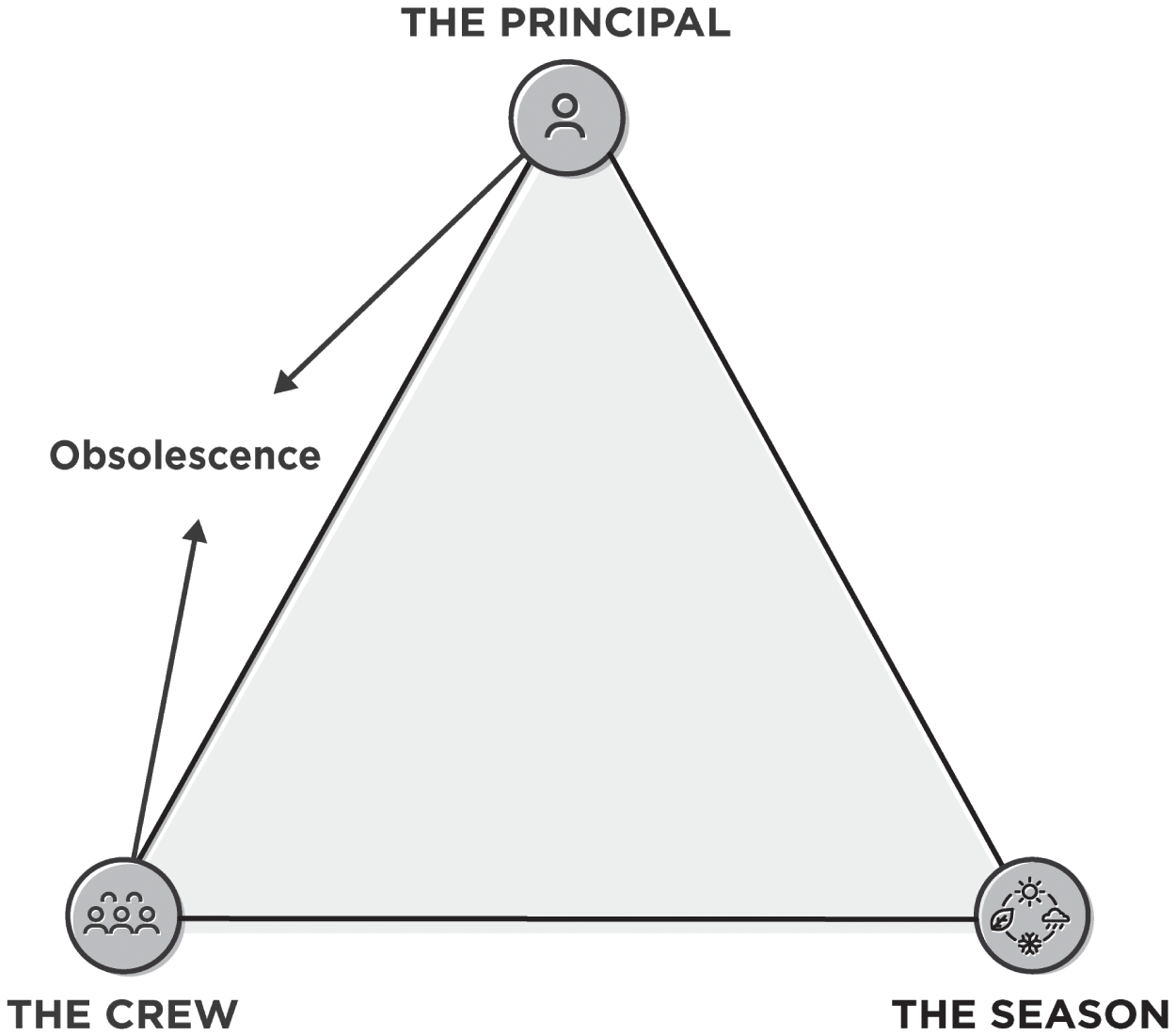
Finally, if the crew is responding to the season and working within the external environment, but is doing so without any leadership or direction from the principal, what you are left with is chaos. There won't be any coherence in your activities and progress will stall.
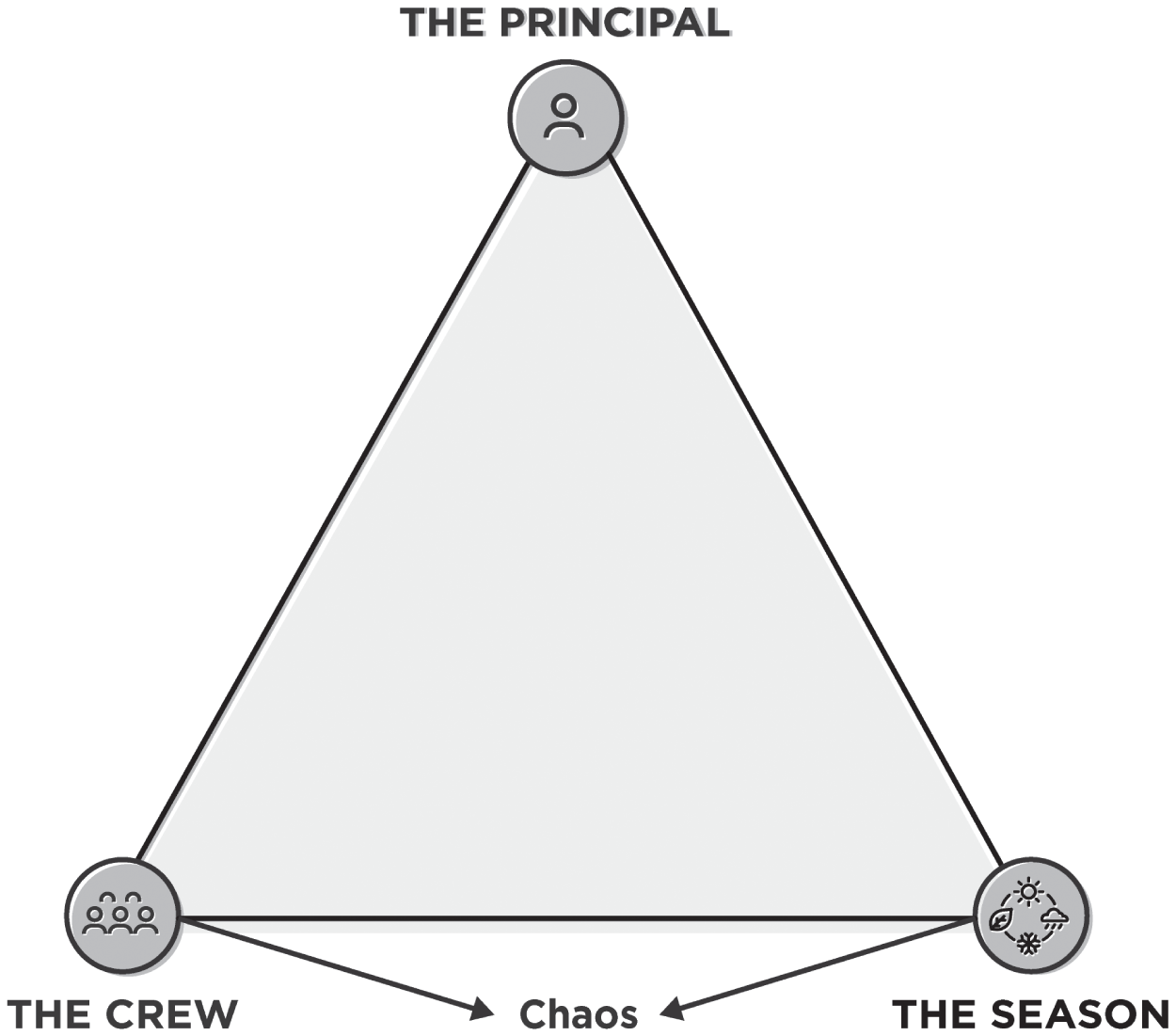
What many organisations are aiming for is what we discussed at the beginning: the principal setting a clear direction and communicating the big-picture vision; the crew aligning with this vision, buying into it and being given autonomy to work toward that goal; and the organisation as a whole being aware of and having the ability to adapt to an ever-changing environment. The ideal state is to find a balance among all three themes.
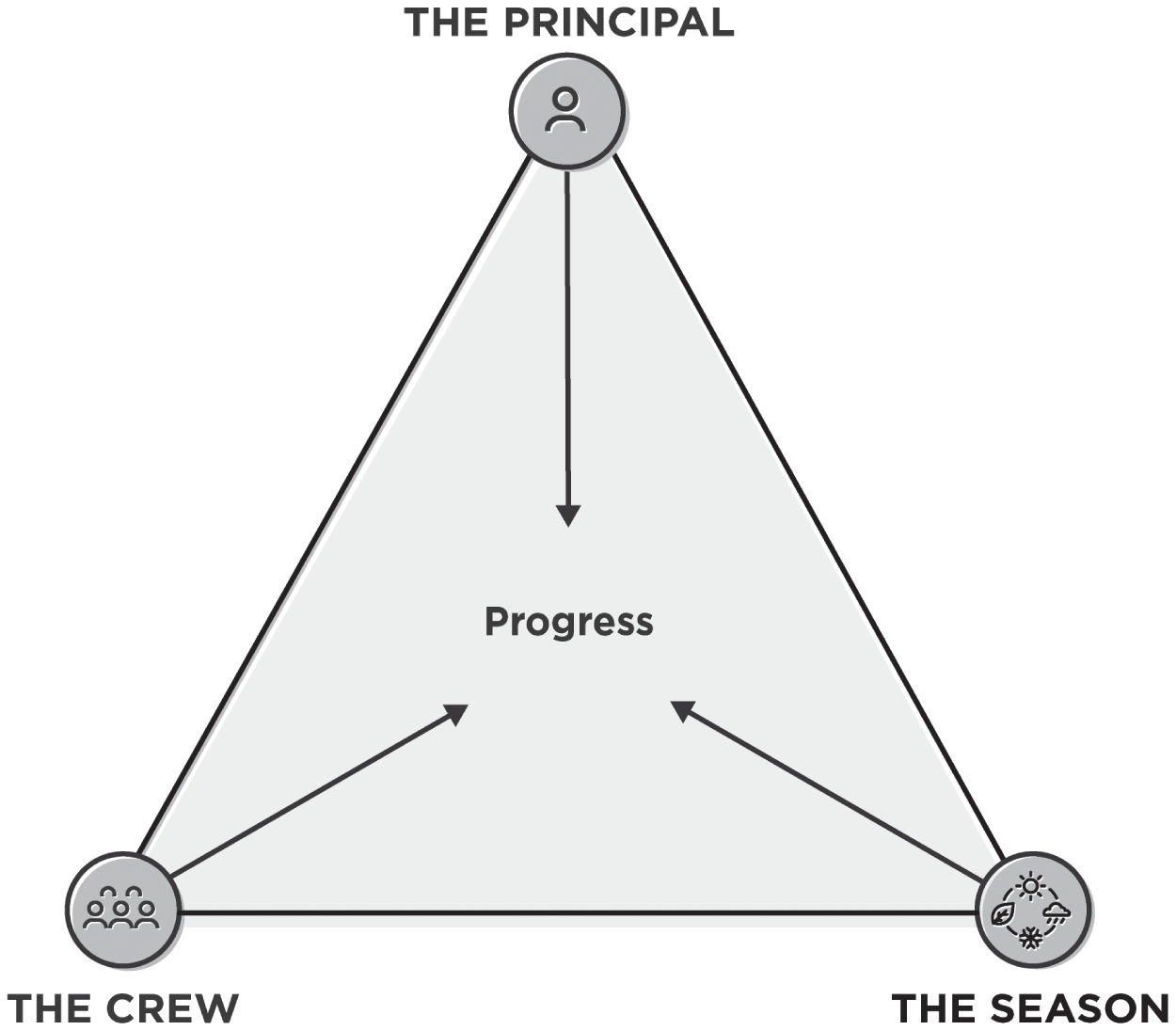
There are no silver bullets
If you have picked up this book hoping to find a silver bullet that will solve your business' problems, we're afraid we are going to disappoint you. Harmonising these three themes takes time, effort, and a great deal of motion. What we are sharing in these chapters, however, is aimed at helping you uncover how to translate your motion into progress and become a more adaptive organisation in the process.
Each part of this book covers topics related to that component of the business ecosystem. We begin in Part One with leadership, which comes from the principal. Without a clear direction of travel, you may meander aimlessly or go in circles, so setting that North Star is an important starting point. You also need to know how to measure your progress. Without clear measurement of the right metrics, you can't see how far (or not) you've gone and are therefore in danger of slipping back into a cycle of motion.
In Part Two, we move to your team and organisational ecosystem, including its culture. This component involves not only aligning your crew behind your vision, but also how you can support your team members to contribute to that progress, deliver on your goals, and do so in a way that draws on their strengths. Autonomy is one of the key concepts here, but this has to come with clear guidelines and a definitive North Star.
Finally, we explore the enterprise environment in Part Three, which is represented by the season. These are the events that you have to manage and adapt to as a business, but they are ones that are outside of your control. For example, the economy, political upheaval, global pandemics, and even the weather impact organisations of all sizes and in all sectors. This is not only about navigating challenges, but also about spotting opportunities and knowing when and how to take the shot that can significantly accelerate your progress.
Uncovering your starting point
You and your organisation are on your own personal journeys, with your own starting point. At the end of several of the chapters, we have provided a link to a series of online exercises that will help you to understand what stage you are at, what direction you may need to move in, what changes you may need to implement, and where you can find support.
Use these resources to help you apply the lessons from this book in your own business. Our aim is to help you understand how you can turn motion into progress, and to clear any rocking horses out of your boardroom.
Working towards meaningful transformation
We live in a world where competition really can come from anywhere, and businesses have to be able to rapidly respond to threats and adapt to change. Organisations must evolve multiple strategies and use these abilities to build and maintain persistent relationships with their customers. So, business transformation tends to be at the top of most large corporate agendas, to modernise businesses that have fallen behind in some way and need to rapidly play catchup.
In many cases, there is also a customer experience transformation (CXT) happening to meet the fast-shifting needs of customers, who today are empowered and in control. CXT is the combination of data transformation and digital transformation, which relates to a business' ability to respond in today's expectation economy. This is a world where customers are increasingly digitally savvy. They have choice. They are informed. They can and do vote with their feet (increasingly with their smartphones!). They expect service. They want quality. They are vocal when they don't get it.
If you are one of the many businesses that is transforming across multiple areas to make up lost ground, then this idea of building a business that can turn motion into meaningful progress will be very topical for you.
In our current work for Merkle and dentsu's Customer Experience Management service line, Rich as Chief Strategy Officer, EMEA, and Az as Chief Marketing Officer, EMEA, this is a topic we've tackled time and again with our clients. Over many years, we have seen and been part of extraordinary transformational efforts as well as attempts to transform businesses that did not gain sufficient traction.
What we are sharing in this book is a set of themes that any organisation can follow on its journey to becoming an adaptive organisation. Turning motion into progress is a key part of that journey. After all, how else are you going to get off the starting grid? However, as we're sure you know, making progress requires far more than simply turning on the engine and putting your foot to the floor.
The principles we share in each chapter are based on our experiences where we pull together examples and analogies to illustrate what we have found to be most important to a business' ability to become an adaptive organisation, and will hopefully provide you the guidance you need to harness that adaptive behaviour and turn it into meaningful progress. It is highly likely you already embrace at least some of them. However, if you are reading this book, there are also likely some obstacles in your path, some of which you may not even be aware of. Our hope is that you will find some ideas that can help you navigate those obstacles and continue your journey toward adaptiveness in the most efficient way possible.
If we help you overcome even one obstacle on your journey, we have achieved our goal. If you're ready, let's join the principal; it's race day.
